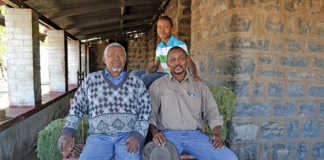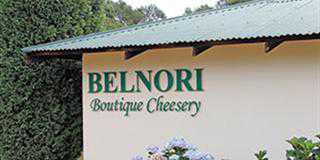
Photo: Robyn Joubert
In 2012, world macadamia production reached 135 000t nut in shell (NIS) with a wholesale value of about US$500 million (R4,4 billion). In South Africa, the crop of 34 000t NIS is worth about R1 billion.
The Green Farms Nut Co (GFNC) has grown to become SA’s biggest macadamia processing and marketing company. Thanks to shrewd joint ventures with its Australian counterparts, GFNC is also a co-founder of the largest macadamia nut marketing company in the world. We will look at GFNC’s Macadamia Market expansion.
READ: Fruit SA joins The Great Fruit Adventure campaign
GFNC’s Macadamia Market growth and high standards
Like many successful businesses, GFNC started small and grew organically. Established in 1991 by Levubu macadamia and pecan nut farmers Alan and Jill Whyte and White River macadamia farmer Rodney Green, GFNC kicked off by opening a processing plant in Hazyview. This was the first privately owned macadamia processing plant in South Africa. In 1992, the company opened a second plant in Levubu.
Partnering with macadamia farmers on the KZN south coast, GFNC opened a plant in Ramsgate in 2007. Macadamias were a relatively new crop in the region and farmers benefited from GFNC’s processing, technical and marketing expertise. The following year, the Whytes and Greens set out to develop to full capacity.

GFNC client manager Werner van Niekerk, G&G sales manager Europe and Middle East Alex Whyte, CEO Jill Whyte, and G&G director of sales and marketing Brian Loader.
“We invested heavily in the factories to get them up to world-class standards. They are HACCP (Hazard Analysis and Critical Control Points) and ISO 22 000 accredited. “We also carry out annual upgrades to ensure that we keep pace with increasing crop volumes and technical developments in processing to satisfy the stringent specifications demanded by our international customers,” says Jill.
Major player
GFNC produces two main groups of products: whole and large sized nuts which are suitable for the snack market; and broken and smaller nuts for manufacturing products in the confectionary and baking industry.
A mere 2% of the product is sold locally, with 98% exported to the US, Europe, the Middle East and the Far East. GFNC’s marketing team is crucial to the business’ success. “We have positioned ourselves as the biggest macadamia marketers in the world. We process and market 30% of SA’s macadamia kernel. This excludes product sold in shell to China,” says Jill.
In 2010, GFNC joined forces with Australian macadamia processing and marketing company Suncoast Gold to form Green & Gold Macadamias (G&G).
“This is the biggest single marketer of macadamia nut products in the world, with access to all the major growing regions in Australia and South Africa. These two countries produce 55% of the world’s macadamias,” says Jill. This is the first step in GFNC’s Macadamia market domination.
In October 2012, Stahmann Farms Enterprises, a leading processor and marketer of Australian tree nuts, joined the group. The addition of Stahmann means that G&G now handles approximately a fifth of the world’s macadamia crop.
The merger creates significant marketing advantages. “The global wholesale value of the total tree nut basket is US$20 billion (R176 billion), of which macadamias constitute only 1%. There is still the untapped potential of the Asian and Indian markets to explore. With the merger of Stahmann and expanded supply chain capabilities, we will be perfectly positioned to grow into these markets,” Jill explains.
Volume power
The G&G partners have a broad industry knowledge base and access to large volumes, which means they can deal with big customers. G&G director of sales and marketing Brian Loader says, “The top 10 retailers in the world purchase almost half the industry’s product – and top food manufacturers want large, reliable suppliers. G&G is big enough to play this role.”
GFNC’s geographic footprint extends from Robertson in the Western Cape to Louis Trichardt in Limpopo, and there is a supply network of more than 200 farmers that makes up about 50% of SA’s growers.
Satisfied suppliers
“One of our strong points is our payment system,” says Jill. “Our goal is to pay the best farm gate price in SA. We pay growers 75% four weeks after delivery, 15% at the end of November and 10% at the end February.
“There is a pool for any marketing or exchange rate benefits accrued over and the above the offer price, and farmers receive a profit share from that pool. It is a good system for them.” Keeping farmers happy negates the need to sign contracts with growers.
“Growers keep coming back because of the service we supply and the prices we pay. It gives us an edge over competitors who lock farmers into contracts,” Jill explains.
The future
Currently, macadamia orchards in South Africa take up 17 880ha, but GFNC expects further plantings as the industry grows. Challenges exist in the form of high electricity and labour charges which account for 50% of running costs, and excessive nut in shell (NIS) purchases from Chinese traders.

Macadamia factories are labour intensive and GFNC’s Levubu factory employs 300 people. Courtesy of GFNC
“This is a growing trend, with about 25% of the SA crop going to China. That undermines economies of scale in processing plants, and we lose control of our product. If it is processed cheaply abroad, it might go to our export markets and compete with us,” Jill explains.
Too many processing factories may present a further challenge; the 2012 South African crop was 34 000t and there are 18 processors competing for the same market. Jill expects that food safety standards and traceability will count in their favour and lead to some attrition in the number of processors in the future.
Health and safety
“Food safety is becoming a global issue. Big processors and food companies want sustainable supply, consistent good quality and a product that is safe for human consumption.”
Jill predicts that it will be difficult for small and medium-sized companies to operate in this environment. With food safety and traceability in place throughout the supply chain, GFNC is well positioned for future growth. “We have grown quickly because we have a team of professional people who feel passionate about what they do. We would like to expand our supply base and continue to provide good service to farmers,” says Jill.
Job creation and BEE
“The macadamia industry is geared towards job creation; nuts are hand picked and plants are labour intensive. There are 300 people employed at our Levubu factory and 200 at the White River factory,” says Jill.
An opportunity for further job creation lies in developing emerging macadamia farmers on 5ha to 10ha units. In a co-operative development in 2009, GFNC provided R1 million worth of support to 15 farmers in Vembe.
This was enough to purchase and plant the trees and sustain the growers for the first year of development. GFNC also provided technical training in best farming management practices.
“The trees are now three years old and starting to bear. When they come into full bearing in 2015, 10ha of macadamias can conservatively yield 30t and earn an income of R25/kg gross or R500 000/year net. For a small family, that is a good earning potential. We would like to see this rolled out on a bigger scale and introduced to every subtropical rural area where we have a factory,” says Jill.
Contact Werner van Niekerk at [email protected]
This article was originally published in the 01 February 2013 issue of Farmers Weekly.













